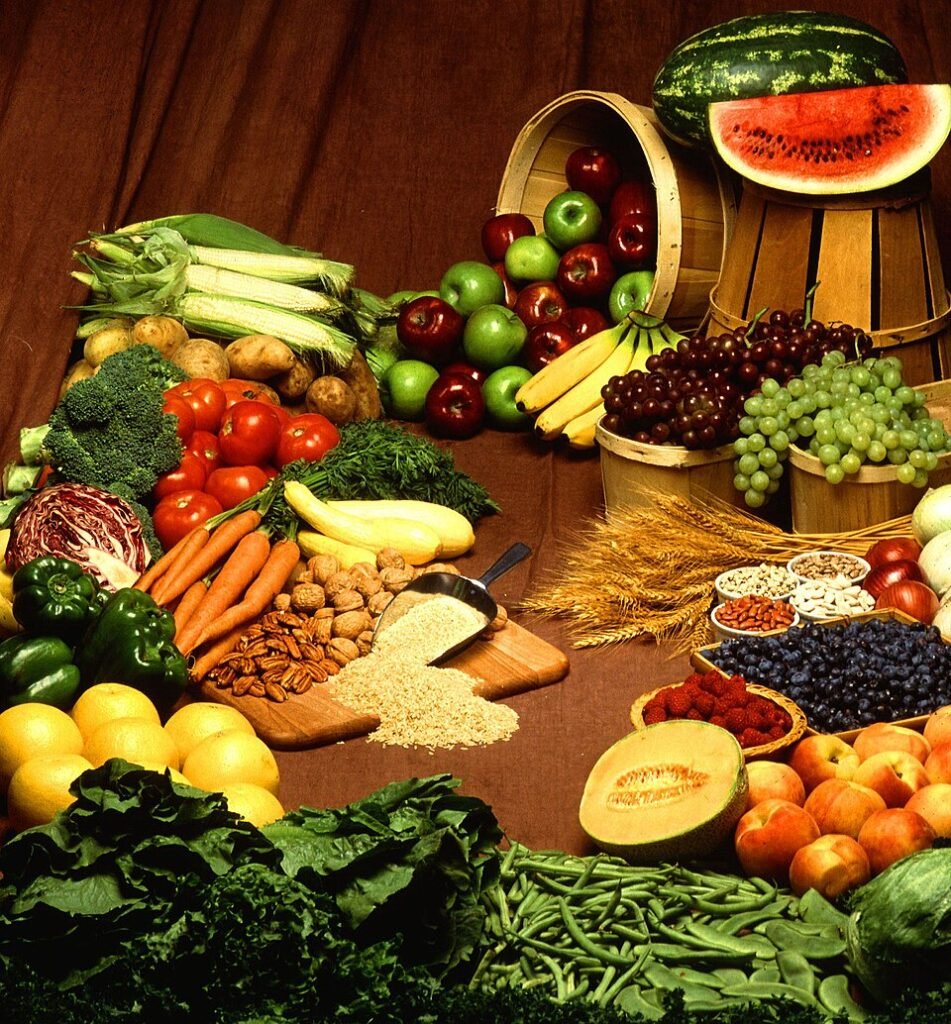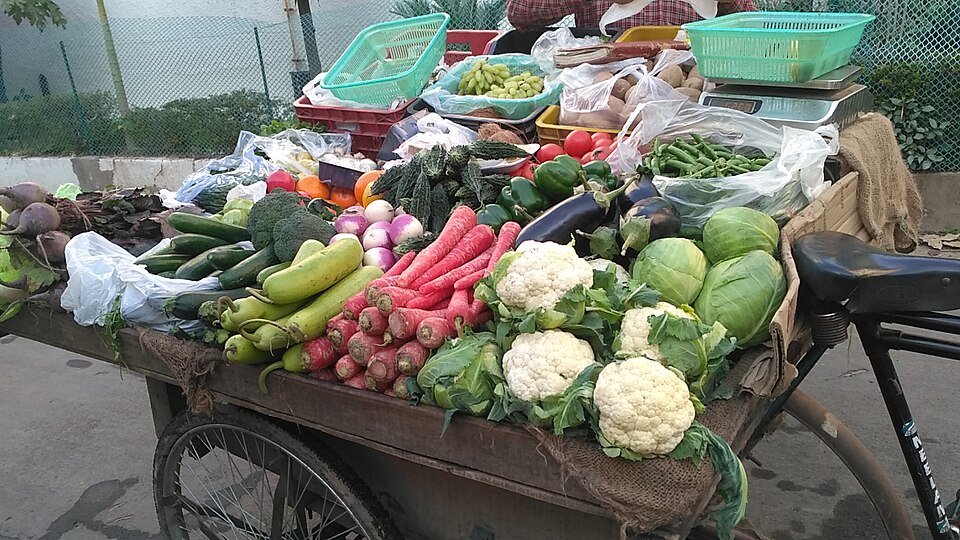Plant source foods
Consumption area(s): Earth

Introduction
This page focuses on plant source foods, covering both edible plants in their original form and the various foods derived from them.
Edible plants
Edible plants can be classified according to the part of the plant that is eaten. This approach helps us understand the diversity of plant-based foods in a practical and intuitive way. We eat roots like carrots, beets, and radishes; stems such as celery, asparagus, and rhubarb; leaves including lettuce, spinach, kale, and cabbage; and flowers like cauliflower, broccoli, and artichokes. Other edible parts include seeds (such as lentils, peas, and sunflower seeds), fruits (like apples, tomatoes, cucumbers, hazelnut, walnut, rice, wheat, and corn), and even bark in certain species.
From a botanical perspective, a fruit is any part of a plant that develops from the ovary after fertilization and contains seeds. This category includes tomatoes, eggplants, pumpkins, hazelnut, walnut, and also rice, wheat, corn and others.
In culinary terms, however, the word fruit usually refers only to those botanical fruits that have a sweet or tart flavor and are typically eaten raw, especially as desserts, such as strawberry, peaches, or melons. This culinary usage excludes many savory botanical fruits, which are commonly treated as vegetables.
The term vegetable is a culinary—not botanical—category. It refers to all edible parts of a plant that are not sweet fruits: this includes roots, leaves, stems, flowers, and also many botanical fruits that have a savory flavor, such as zucchini, avocados, and peppers.

Plant-derived foods
Besides being eaten in their natural state, plants are also widely processed into various plant-derived foods. Flours made from legumes and rice, corn, wheat, and others serve as the foundation for countless products, including bread, pasta, and other flour-based foods. Vegetable oils, extracted from oil-rich seeds such as sunflower, flaxseed, and sesame, are commonly used in both cooking and seasoning. Moreover, alcoholic drinks like wine are plant-based as well, typically produced from ingredients like grapes, and are enjoyed by people in diverse cultures across the globe.
Nutritional properties of plant source foods
Plant source foods differ in their nutritional content. Sugars like glucose and fructose make up most of their carbohydrates. Plants also provide nearly all vitamins, aside from B12 and D, and may or may not be rich in minerals. Culinary fruits often contain up to 90% water, along with high levels of natural sugars and vitamin C, giving them their sweet taste.
Compared to fruits, most vegetables contain more starch, fiber, potassium, and folate, and are typically low in calories and fat. Foods like rice, corn, and wheat are mostly starch-based, whereas almonds, hazelnuts, and walnuts are rich in proteins, fibers, and vitamins. Some edible seeds are valued for their healthy fats, including omega-3s, and are a major food source for many animals. Still, some plant compounds, like phytates, may interfere with the body’s ability to absorb nutrients efficiently.
When it comes to plant-derived products, flours provide abundant complex carbohydrates and proteins. Vegetable oils extracted from seeds like sunflower, flaxseed, and sesame supply essential fatty acids and vitamin E. Plant-based beverages, such as soy and pea milk, deliver protein and are often fortified with vitamins and minerals to align with the nutritional profile of their animal-based equivalents. While alcoholic beverages contain high levels of carbohydrates, they pose serious health risks because alcohol is a known carcinogen, and its consumption should be minimized.
Classification of plant source foods
In this context, we consider both edible plants, primarily grouped by phyla (only those relevant to culinary use are listed here), and their derived foods.
Edible plants:
- Coniferophyta (fir needles, juniper berries, pine needles, pine nuts)
- Cycadophyta (cycad nuts)
- Ginkgophyta (ginkgo seeds)
- Gnetophyta (gnetum, welwitschia)
- Magnoliophyta or Angiospermae or Flowering plants (all other edible plants)
- Polypodiophyta (ferns)
If you’re unsure about the meaning of certain terms, we invite you to consult the glossary: when a term is not explained directly in the article, the word is clickable and links to its definition. You can access the full glossary here:
Plant-derived foods:
- Alcoholic beverages
- Cocoa-based foods
- Flours
- Malts
- Plant-based beverage
- Sugar (sucrose)
- Tomato-based foods
- Vegetable oils and derivates
It is also worth noting that algae and mushrooms, which are not classified within the plant kingdom, will be addressed on separate dedicated pages.
Source(s):
https://en.wikipedia.org/wiki/Food
Photo(s):
1. Keith Weller, USDA ARS, Public domain, via Wikimedia Commons
2. Jazze7, CC0, via Wikimedia Commons
